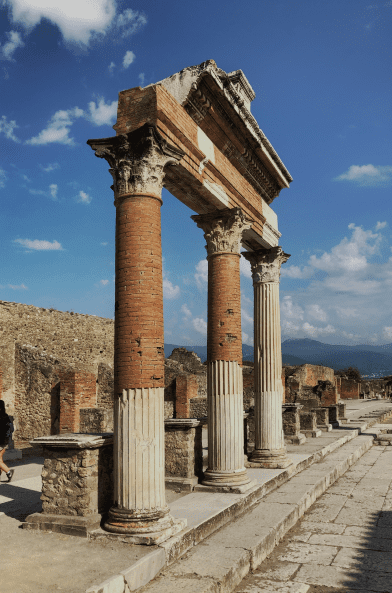Workation » Best Workation Locations and Why You Should Visit Them » Italy Workation – Working and Vacationing in Italy » Things to do in Italy during Workation
Best Experiences in Italy during Workation
The best things to do in Italy during your Workation package takes you around a country home to the greatest number of Unesco World Heritage Sites in the world.
Italy is a compendium of perspective-shifting artists, thought-provoking scientists, and beguiling vistas reaching over iconic hills or shining clear waters, classical castles or quiet villages.The majesty of Italy reaches far beyond the museum world and preserved ruins of ancient cultures drawing active travelers from around the world interested in exploring the land- and seascapes.
People visiting Italy often ask “What should I do in Italy,” looking for fun and unique things including and beyond a Best-Of-Italy list. The following list offers ideas about the best “bleisure” activities, showing what you can do in Italy during your Workation any time of year.

Museum and Archeological Visits
Museums and archeological sites in Italy preserve and exhibit artifacts that represent elements of human history and the possibilities of discovering the secrets of the past. Italy as a whole has nearly 2,200 public museums, galleries, and archives, in addition to over 1,000 private galleries and museums. Archeological parks create massive stretches of land on which ancient ruins echo some semblance of past cities, communities, or temple grounds.
Paestum in Campagna provides one of the largest Greek temples on mainland Italy, Pompeii outside of Naples demonstrates what an ancient Roman city once looked like, and the tombs of Cirveteri and Tarquinia offer insight into Etruscan life and the afterlife. The most famous ruins include the Colosseum and the Roman Forum in Rome, each acting as gateways into the past.
The best destinations in Italy for Workation will have exceptional connections to history and culture at your fingertips. By visiting the artwork featured in the Vatican or the Uffizi Gallery in Florence, suddenly the past becomes present, and you can witness the actual beauty of art, artisan craftsmanship, and the handiwork of creating civilizations.
Hiking
Tourists rarely think of the “Great Outdoors” when dreaming of Italy but in fact conjure images of the rolling Tuscan hills or the coastal trails connecting the five towns of Cinque Terre.
Whether in love with nature, in search of the divine seclusion the outdoors offers, or simply a fan of an easy-to-access activity that doesn’t involve running, Italy has multitudes of trails crisscrossing mountains, traversing floodplains, winding around the marvelous coastline, and following in the footsteps of historic pilgrims en route to the holy steps of the Vatican.
The question was never, “Are there hiking trails in Italy,” but rather, “which hiking trail in Italy should I choose?” Workation can give you the perfect bleisure experience when exploring the paths that often lead away from the most prominent destinations of the country and offer surprising, remote splendor best enjoyed between late spring and early autumn, whether in national parks or when visiting the countless Unesco World Heritage Sites In Italy.

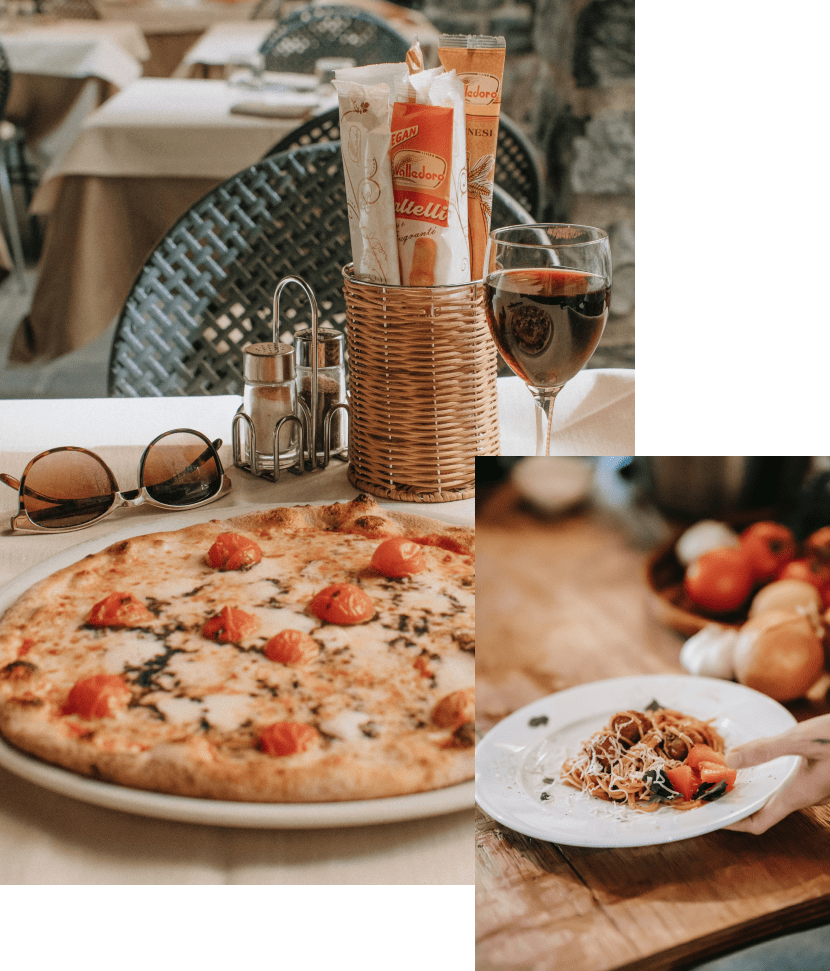
Food Tour
It’s no surprise to learn that Italy is all about food, from the morning bite of a fresh brioche to a large family dinner highlighting the regional artisanal cuisine locals eat daily. A food tour takes you out of the kitchen and into the streets of a city, village, or classic Italian town to learn about cuisine from the morning markets, working chefs, or popular cafes serving delicious treats for decades, or even centuries. A food tour in Italy can take many forms, with each meant to showcase a specific attribute of Italian cuisine.
A tour in Naples may promote tasting the different types of traditional pizza; a tour in Rome could introduce you to the different styles, textures, and flavors of delicious gelato; a tour in Bologna can take you to different restaurants serving the fresh-made pastas consistent with a tradition of Tortellini in Brodo; and a market tour in Florence can introduce you to the farmers offering their fresh goods to the restaurants first-thing in the morning.
Equally fascinating is a food tour of Venice revealing the famous chicchetti, a wine bar serving small plates in the afternoon to evening. Whether you’re in the mood for sampling the different cheeses of a region or eager to learn more about the crossroads between Italian and Jewish gastronomy over time, a food tour offers a distinctive doorway into what to eat and Where in Italy as you enjoy the little pleasures of greater Italian culture.
Artisan Crafts Experiences
Artisans take their craft to the level at art, turning their passion and drive into a spirited and emotional production of in workshops across Italy. Skilled workers who craft their goods by hand have graced the cities and countryside around the Italian Peninsula for centuries, representing high-end printing, cobblers, leather workers, shirt makers, and mosaic masters creating with a sense of pride and tradition. Artisans continue to use antique techniques to create their crafts, most often handed down for generations between former master artisans and typical of the region in which they live. Tuscany is famous for tanneries and quality leather, while Puglia is known for crafting marvelous terracotta and paper-mâché.
The quality craftsmanship and attention to detail is becoming rarer in Italy and across Europe, with the work of an artisan requiring extensive training, making an Artisan craft tour that much ore captivating. The guide will introduce you to the artisans working in their private studios, concentrating on producing their much-appreciated crafts by focusing on the minute details turning their wares into magnificent examples of the trade. Visiting a craftsman’s workshop can be a humbling experience due to witnessing the remarkable work in real-time as the artisan tinkers to complete the final product.
The Differences of Italy’s North, Central, and South have given birth to a variety of artisans over the course of nearly two millennia, each representing a portion of Italian tradition and the importance of quality craftsmanship. Cities like Florence have a quarter known for its artisans, where tourists or curious neighbors can walk down the street and peer into the windows of treasure-troves hosting handmade jewelry workshops, painted prints and frames, or metal works. The following list are examples of areas in which Italian artisans continue to work, producing quality works hidden within the historic cities across the country.

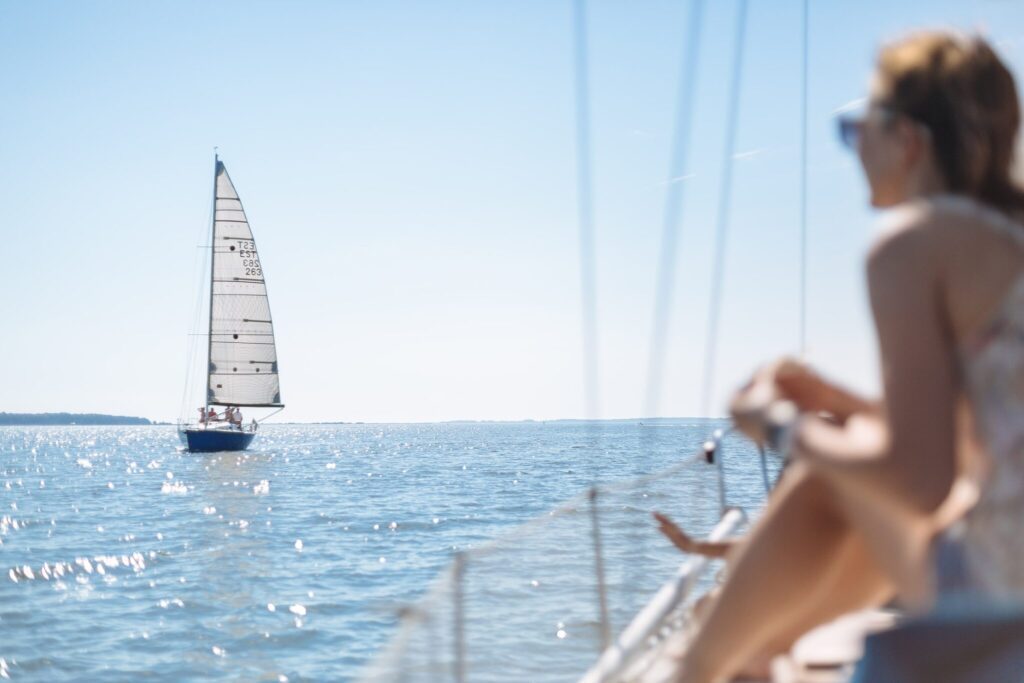
Sailing
The culture and historical richness of Italy accentuates the deep tradition of sailing, adding an enchanting glamour to the activity and the ways in which the sails decorate the Italian coastline and its islands throughout the year perfect the bleisure experience. The country edges the famous sailing grounds of the Mediterranean Sea, which brings seafarers from around the world keen on traversing the European coastline at their own pace while harbor hopping between the most fashionable stops around the Italian peninsula. The Mediterranean Sea along the Italian coast is divided into several different areas that include the Ligurian Sea, Tyrrhenian Sea, Sardinian Sea, Ionian Sea, and Adriatic Sea.
Although Italians continue a love affair with speed, accounting for the greater number of motor boats to yachts in the country, the steady sunlight and refreshing breeze provide comfortable passage for sailing enthusiasts across the clear waters emphasized by the aromas of a briny wind, delicious wine, and indulgent Italian cuisine. Find more opportunities to enjoy sailing during your trip when looking at possible ideas on your Italy Workation packages.

Fishing
The art of actively catching live fish from different bodies of water has been practiced for at least 40, 000 years, with artifacts tracing back to the beginning in the Upper Paleolithic period. Archeologists consistently find bones, shells, and paintings reflecting the sea foods once important to survival of coastal peoples.
Italy has planted deep roots in the cod trade, which dates back to the Viking Period more than 1,000 years ago. Fish stood as an important economic commodity on the international market.
With a coastline spanning more than 5,675 miles, which accounts for nearly nine percent of the European Union’s entire coastline, Italy retains a connection to its fishing industry and the richness of the activity taking place around the entirety of the shoreline. With ample coastline to explore and the draw of a delicious catch, the following list offers a small collection of the best fishing destinations in the country.
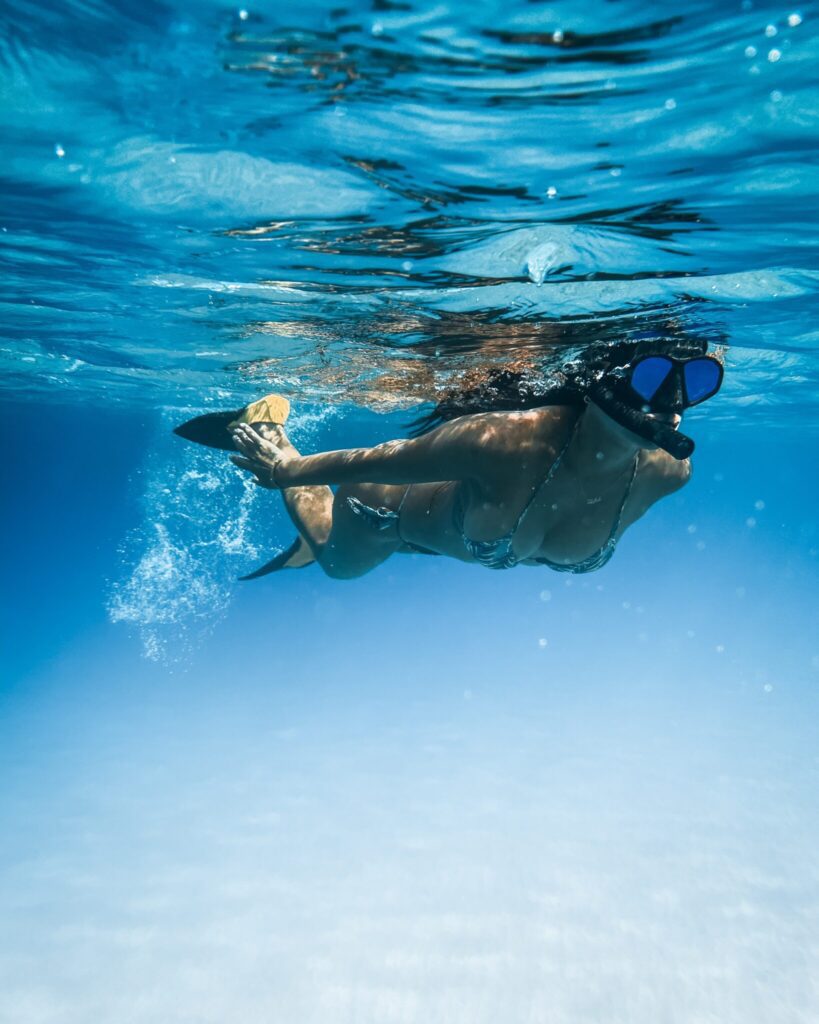
Snorkeling
The pristine coasts of Italy beg for more than just panoramic views with turquoise, indigo, and azure water, bearing active marine life and hidden coral gardens perfect for exploring. The practice of snorkeling is a more relaxed discovery of the coastline of Italy in pristine waters associated with the Mediterranean or Adriatic seas but overlooked as fantastic snorkel or scuba destinations.
The activity of snorkeling was first mentioned by Aristotle in Parts of Animals, which was written around 350 BC. Archeologists have unearthed evidence suggesting the activity began in Crete around 5,000 years ago with farmers using hollowed-out reeds to retrieve sponges for trade. It can create a great escape from work during a bleisure trip.
Cycling and Mountain Biking
Avid cyclists understand the difference between mountain biking and cycling. Cycling refers to the transport or sport of using a bicycle, while mountain biking offers an off-road excursion incorporating a durable frame and wheels to help navigate the rougher terrain.
As a sport, cycling has reached international popularity with races like the Tour de France; it was also introduced into the Olympic games in the rebirth of the modern Olympic movement in the summer of 1896. Mountain biking entered the international stage at the Olympics level when introduced in the 1996 games located in Atlanta, Georgia.
The different ways to travel around Italy can take many shapes and due to the different terrain required to participate, Italy has a variety of unique destinations perfect for the avid cyclist or mountain biker to turn any Italy Workation into an active exploration.


Cooking Lesson
In Italy food is not a trend nor is a meal an afterthought meant to be rushed through to satiate the body. Instead, food is a representation of the soul, a demonstration of feelings, and an illustration of cultural history. A cooking lesson in Italy is more than learning ingredients and placing them together to form a dish, but is instead a symbol of regional cuisine, a story of the creation of a particular food, and a connection with the person sharing the recipes, techniques, and instructions on the ways to make a proper local Italian meal.
In the early 2000s, the majority of tourists ran to Tuscany when desiring an authentic cooking lesson. The evolution of the travel industry and its connection to food has shed light on the true depths of regional cuisine in Italy, providing more unique choices across the country showcasing the specialties of a region, province, or even a village once hidden away from the larger world.
Picking the right cooking class for you is more fun and also requires you to answer questions about the reasons you wish to take a class or course in Italian cooking with more and more lessons tailored to the style of artisan cuisine in the north, the rustic flavors of the south, or the best ways to prepare, cook, and pair dishes with local wines. Most often, the class allows you to partake in a variety of dishes by creating at least a three-course menu consisting of regional primi, secondi, and dolce dishes.

Wine Tasting
Wine and Italy are synonymous to travelers in the same way you think of spaghetti with meatballs or cheese on pizza, however, wine has a different connotation and purpose in Italy ingrained in the cultural heritage. A brief history of wine in the Mediterranean uncovers the truth of the fermented beverage nearly as old as civilization itself along the Italian Peninsula. Evidence suggests grape vines have grown wild for millions of years but gave way to rudimentary wine production during Neolithic times with pottery vessels filled with wine discovered around the Mediterranean.
Greek and Roman civilizations helped spread the importance of wine through the Mediterranean and beyond, including transferring vines to trading posts in the Rhone, Burgundy, and Loir valleys eventually leading to the Rhine. The warm, dry summers with cool evenings and mild, wet winters allow different varieties in Italy to flourish to produce wines significantly different from one another based upon the region in which they are grown.
The multitudes of grape varietals and historical significance means that no matter what region you visit in Italy, you can enjoy a wine tour. A tour generally consists of three to eight glasses of wine for comparison offered in either a store inside a city or town, or situated on a vineyard property.

Olive Oil Tasting
In Italy, olive oil is like wine, each with its own purpose, anticipated flavor, and deriving from a celebrated province of a particular region. Although an array of oils is available from countries throughout the world, Italy continues to offer the greatest variety and abundance of quality olive oil meant for professional chefs or less-than-enthusiastic home cooks.
The cultivation of an olive tree began in the Mediterranean approximately 6,000 years ago. Stone tablets from 2,500 BC from the court of King Minos in Crete document the farming and processing of the tree. By 3,000 BC the olive was a prized commodity utilized in trade and widely cultivated across the territories, as spread by Phoenicians, Greeks, Romans, and civilizations across North Africa.
The best oils are gorgeous in their golden color, have a distinct fragrance, and offer a taste particular to the region by the fruit taken from the nutrients in the soil. Also like wine, personal preference accounts for the oils drawing you in and holding you desirably captive. Just because a vendor tells you the olive oil you have sampled is the best in the shop, doesn’t mean you have to enjoy it the most. The differences in production and location yield dramatic differences in color, scent, and flavor.

Truffle Hunting
Italy’s remarkable landscape allows the famous truffles, both white and black, to thrive amidst rolling hills, soaring cliffs, and lush bountiful forests. Dense fields of gnarled trees burst with olives or vines produce grapes along the hillside; citrus groves produce luscious lemons and oranges and the seaside provides bountiful amounts of mussels, fish, and urchin but the Mediterranean sunlight only hinders the prized truffle, which grows slowly in the dark and damp grounds of the forested landscape around different regions of the country.
The truffle has garnered praise throughout the Mediterranean for millennia, with the Greeks believing the fungus grew at the spot hit by Zeus’s thunderbolts and the ancient Romans convinced the truffle provided aphrodisiacal properties. The 18th century gave way to the popular tradition of truffle hunting as King Frances I of France adored the tasty garnish making the ingredient incredibly popular in Parisian markets and down into the provincial towns of Central Italy.
With so many different species to choose from and types to enjoy, the various regions of Italy provide access to a selection of truffles, including the two most priced varietals found in nature, the Black Truffle and the White Truffle.

Scuba
Scuba is a form of exploration that can take you into the depths of the water searching for marine life or sunken treasures around the coast of Italy. What once was an acronym for “self-contained underwater breathing apparatus” has taken its own shape and continues to bring in travelers from around the world who can view marine life in a number of different seas or even view lost ships dating back millennia.
Either snorkeling or scuba diving are fantastic ways to find new and intriguing sides of Italy’s more than 4,700 miles of coastline, including Portofino National Marine Park in Liguria, but not counting the various islands connected to the historic peninsula.
Downhill Skiing
What once started as a means of transport between villages in Scandinavia has evolved into one of the most notable winter sports with a number of different styles adding to the allure for active vacationers and thrill-seekers.
The grandeur and fashion in which Italians have committed to daily life includes an enthusiasm for skiing, particularly in the regions with a practical annual snowfall. Attention to stylish details accounts for luxurious and comfortable ski resorts, fashionable gear, and a quality culture connected to the slopes meant for individuals, couples, or families.
Cross-Country Skiing
The sport of cross-country skiing differs greatly from Alpine Skiing in both form and function, with cross-country skiers relying greatly on their own motion as opposed to gravity or the help of ski lifts. The activity is great for recreation or as a sport, first used as a form of transportation beginning in Scandinavia over five millennia ago. The sport made its first appearance in the Winter Olympics during the 1924 games in Chamonix, France. Italy ranks sixth in the world in medal wins as of 2014, with 34 total medals, including nine gold. Unlike alpine skiing, cross country skiing needs a consistently flatter terrain with grades less steep than those used in downhill runs.
The best-known form of skiing involves the steep grade of the mountains used to reach exciting speeds. The sport has been part of every Winter Olympics since its inclusion in the 1936 games at Garmisch-Partenkirchen, Germany. As of 2014, Italy has ranked fifth in overall medals for Alpine Skiing in the Winter Olympics with 30 medals total, 13 of which are gold.

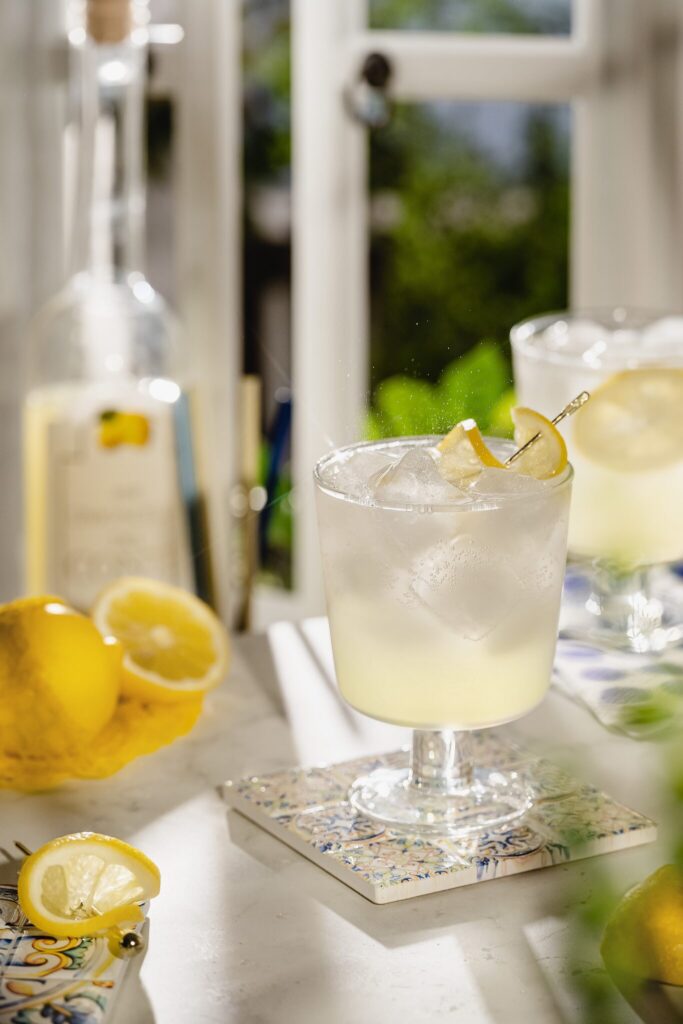
Limoncello Class
The lemon liqueur popular in Southern Italy, especially around the Gulf of Naples and along the Amalfi Coast, has given rise to new opportunities for visitors to explore the depths of flavor and health benefits of favored digestivo, a drink intended to help you digest after a proper Italian meal. Lemons first entered Europe through Southern Italy around the 2nd century AD through the expansion and trade of Ancient Rome. They were not widely cultivated until introduced to the Middle East at Persia, leading into Iraq and Egypt.
The trees flower in May but farmers harvest the lemons between February and October. In the city of Sorrento, lemon vendors line the streets in season selling the raw fruit or the famous limoncello, with each merchant promising their brand was made from a family recipe generations old. The lemons, known as Limone di Sorrento I.G.P. have such a sweet flavor, they can be eaten peeled and raw like a banana or orange.
The word Limoncello refers to the intense lemon flavor of the liqueur often associated with the southern city of Sorrento or the Amalfi Coast, along with the island of Capri. The liqueur has grown in popularity across Italy over the years competing in the north with the favored brandy Grappa (link to Grappa section). During a limoncello class, you will learn the essence of every recipe along with the types of flavors found in the after-dinner liqueur.
Enjoy a sample tasting and hands-on workshop to produce the best limoncello Italy has to offer, especially when visiting Cinque Terre and Amalfi Coast on your Workation, resulting in a sweet and pleasing flavor with a zesty citrus aroma. Artisan varieties have a stronger lemon flavor unique to the microclimates of the region, while factory-made varieties have less of a fresh flavor and more of a fabricated sweetness. Once you understand the basics of the simple recipe, you could exchange lemons for almost any ingredient, including oranges, pistachios, or even coffee.
Cheese Class
Cheese in Italy goes beyond satiation and has grown into an art form in and of itself. Aficionados, cheesemongers, and the casual cheese-eater come together when sampling, snacking, or even dining on the endless variety of Italian cheese. Evidence of cheese making occurred over 6,000 years ago and with producers learning to craft food around the world out of milk from cows, goats, sheep, water buffalo, yak, and even reindeer or boar.
Egyptian tombs have murals depicting people churning butter and crafting cheese, while Romans had their own recipes for different styles, turning science into a developed craft. Italy today produces up to 600 different types and styles of cheese based upon the variations of techniques, which includes the aging process, type of milk used, and the way in which the cheese is stored. Cheese once stood as a symbol of luxury for Ancient Romans who could afford the delicacy but soon the dish transitioned into a staple for the common folk.
After the fall of the Roman Empire, many of the soldiers wound up in the Italian hills and mountains. They became farmers and continued in the cheese-making traditions they had learned while soldiering in the imperial army. Your cheese-making class will immerse you in the history of the craft by introducing you to a hands-on workshop producing artisan cheese. The fun and delicious activity offers an exciting way to present Italy’s cultural history and cheese evolution.
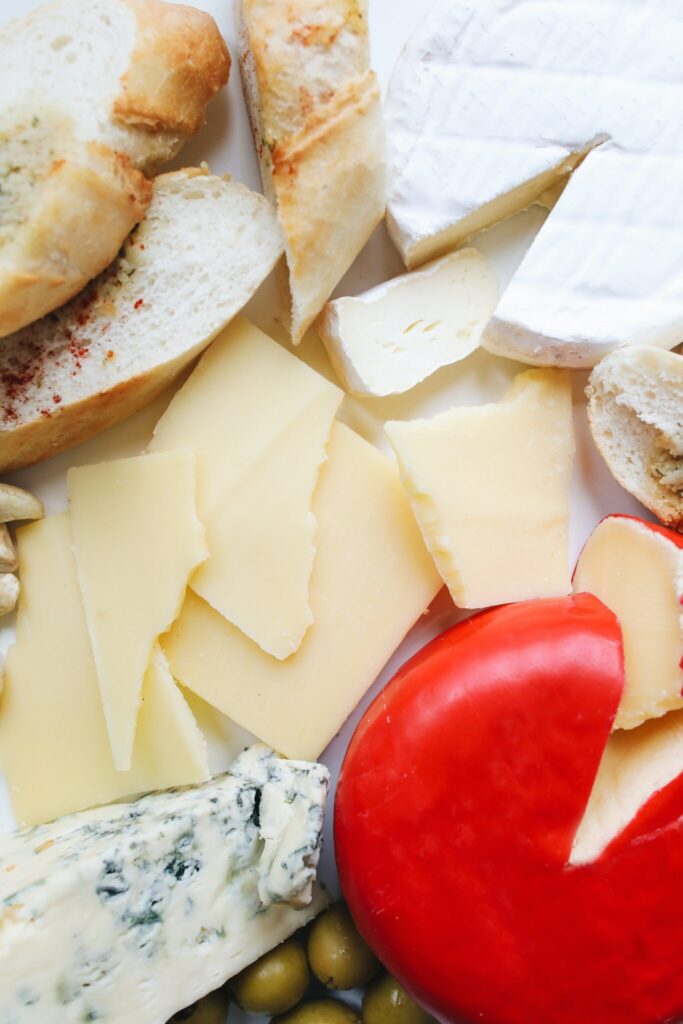
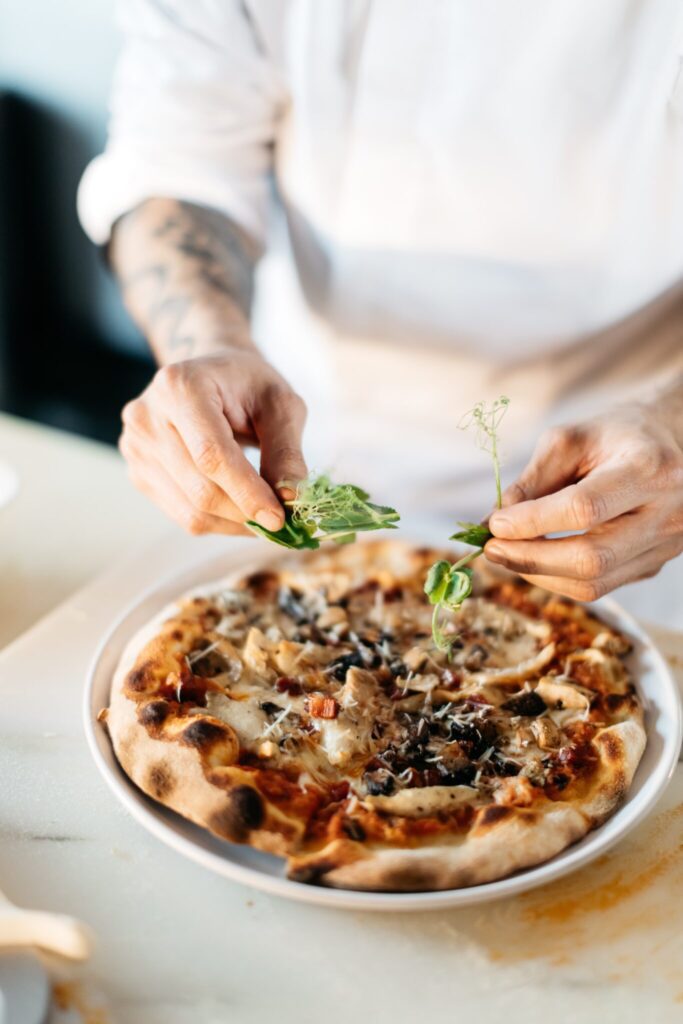
Pizza Making Class
Pizza is an iconic Italian institution on par with the Colosseum or the canals of Venice. Around the world, the dish has evolved into different styles and types made with a variety of ingredients from types of cheeses to unique produce toppings. True pizza began in Napoli (link to Naples Pizza in the food section) in the mid-19th century with the dish’s first documentation beginning in Gaeta in the 10th century AD. A food similar to pizza was eaten during the Neolithic age in Sardinia over 7,000 years ago.
Ancient Greeks also made a flatbread known as plakous, using toppings like herbs, onion, and garlic to help flavor the dish. Soldiers in the Persian army of King Darius I topped flatbreads with cheese and dates, baking the dish on the top of their shields. The best classes in Italy will teach you how to make and utilize the finest dough, which should have a soft texture throughout the process.
Your instructor will show you various ways to move and shape the malleable dough into round balls similar to plums before molding the balls into a pie shape. With a smaller class, your instructor offers attentive guidance during the process of making the dough and topping the pre-baked pizza with the best ingredients. A pizza-making class in Italy topples expectations of the dish you had thought familiar to create a pizza with light dough and complimentary ingredients different from the carry-out, delivery, and gourmet pizza joints back home.
You will use quality ingredients, learn the right ways to make and set dough, and also watch a master utilize a wood-burning brick oven with a technique over 300 years old. Unlike the pizza of New York, Chicago, or even Rome, a Neapolitan pizza has a soft, moon-shaped crust allowing the diner to fold the pizza over to eat as a snack or enjoy with a knife and fork at the table. Whether you visit Northern Italy, Southern Italy, or Central Italy on your Workation, pizza courses in Italy can last as little as a single class for an hour offering the basics with pre-prepared dough, or can last three to five days offering insight into the intimate details of crafting dough.
Pasta Making Class
Other than pizza, it is hard to imagine a more iconic Italian dish than a hardy bowl of pasta with tomato sauce. Although pasta can be authentic to Italy, each region has its own variation of a dish dependent upon common local ingredients and the geographical location of the region, such as Northern, Central, or Southern Italy. A pasta-making class in Italy takes you beyond the façade of a cliché plate of spaghetti and meatballs for a taste of Italian heritage.
The word “pasta” meant paste in Italian, referencing the texture of the dough after combining the flour, water, and eggs. The term pasta describes traditional Italian noodles, differentiating them from the noodles of other cultures around the world, along with the process of using durum wheat for its low moisture and high gluten content suited for production. The type of flour used for Italian noodles differs from those from East Asia, however, Italian pasta is a descendant of the ancient traditions of Asian noodles briefly mentioned in Marco Polo’s memoirs, The travels of Marco Polo, after referencing a tree that produces the flour.
A class can last two to four hours ending with a delicious feast of hand-prepared pasta with deep regional connections or could last up to six days with your instructor offering a selection of different types of pasta, each crafted for a different style of sauce. The best pasta-making classes in Italy gather information on you, to learn about the type of pasta you wish to make, which can vary based on your knowledge of Italian cuisine, your particular tastes, or the region you wish to visit.
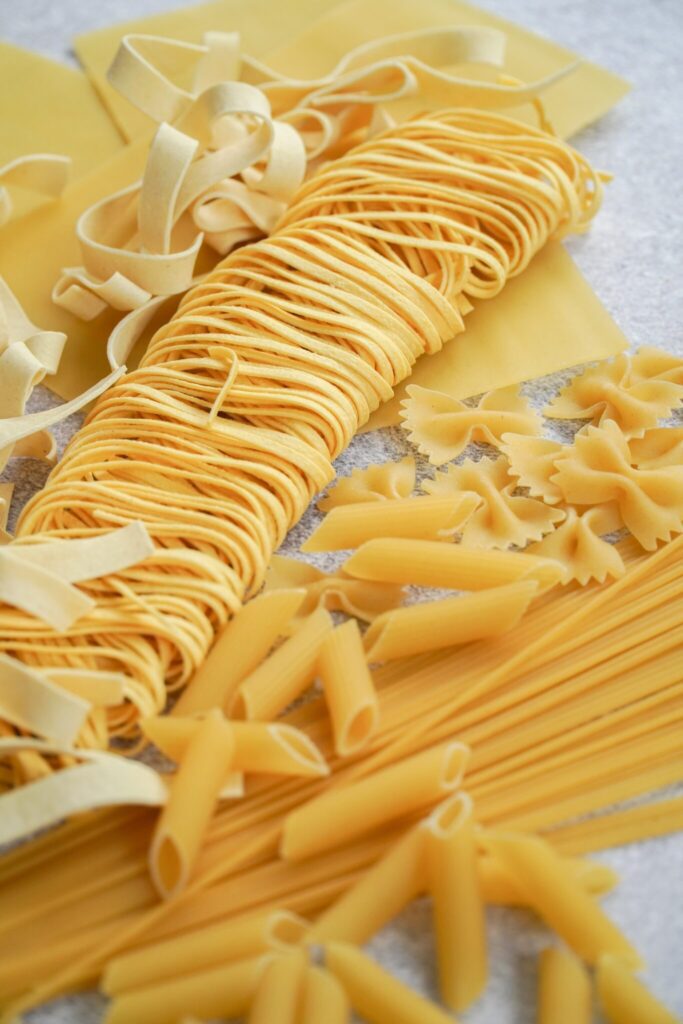
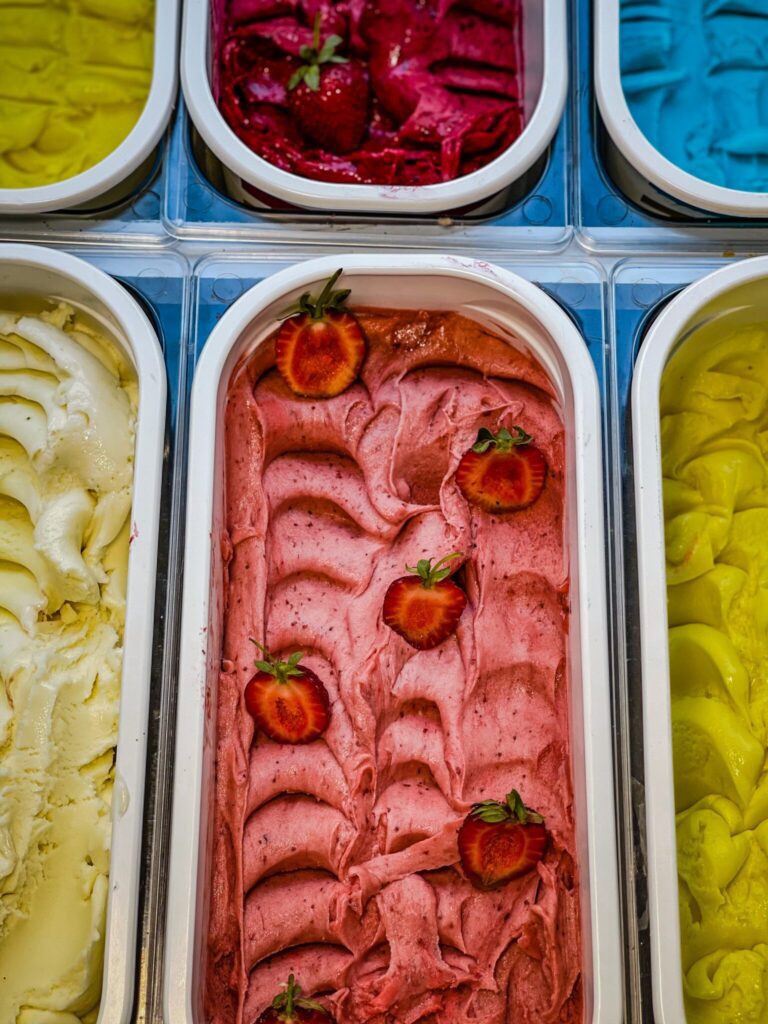
Gelato Making Class
The sweetest treats in Italy have a smooth and creamy texture displayed in glass cases along the cobbled streets of villages and cities or overtaking a small gallery accentuating the seductive aromas of a classic gelateria, an Italian ice cream parlor. Gelato is unique from ice cream due to the different ways the chef utilizes the ingredients. Gelato uses more cream and less milk; gelato also doesn’t use egg yolks, a common ingredient of ice cream.
The slow rate at which gelato is churned helps create a delightful creaminess. The gelato incorporates less air into the mixture for a denser but creamier consistency served at a warmer temperature. These combinations provide a silkier and softer feel to the gelato with a lower percentage of fat content than ice cream to allow the individual flavors to shine. The milk and nuts in gelato offer a great source of protein and calcium to enthusiasts, along with essential vitamins from fruity sorbettos.
Authentic gelato in Italy isn’t served with a scoop and is instead spade into a cup. The different size cup often offers a different selection of gelato, with the medium to large cups allowing for three to five flavor choices. The store divides the counter into two parts, one for fruity flavors, such as lemon, melon, or strawberry; one for creamy flavors, like chocolate, hazelnut, or pistachio. Enjoy the Italian Coffee Culture that blends seamlessly with gelato, especially when learning about the flavors of an affogato al caffe.
Gladiator Training
As an adult, the thought of being a gladiator conjures images of broken bones, clanking chains, and a mouth stuffed with dirt from the grounds of the Colosseum, but for kids, a gladiator remains an exciting proposition connected to battles, cunning, and a large crowd screaming for your success. A gladiator school offers children the chance to train, fight, and battle in the ways of the Romans for a family-friendly activity in Rome.
The swords and shields are fake but the thrills are very real. Each participant learns new skills during the vigorous training process following loosely in the ways gladiators trained for their events in the stadiums, which drew crowds as large as 50,000 people. Instructors wear period pieces with recreated memorabilia decorating the interior galleries and an outdoor training ground reproducing the Roman military defense camp.
Courses range from a single two-hour course to weekly classes exercising participants’ mental and physical skills through mock combat. Lectures on the history of gladiators offer layers to the program, gripping participants both young and old through a prism of historical strengths with offensive and defensive techniques bound to teach anyone how to battle like a true Roman gladiator, including shield-wielding, swordplay, body stance, and the secret military practices that elevated the status of ancient Romans to the world’s most deadly warriors.
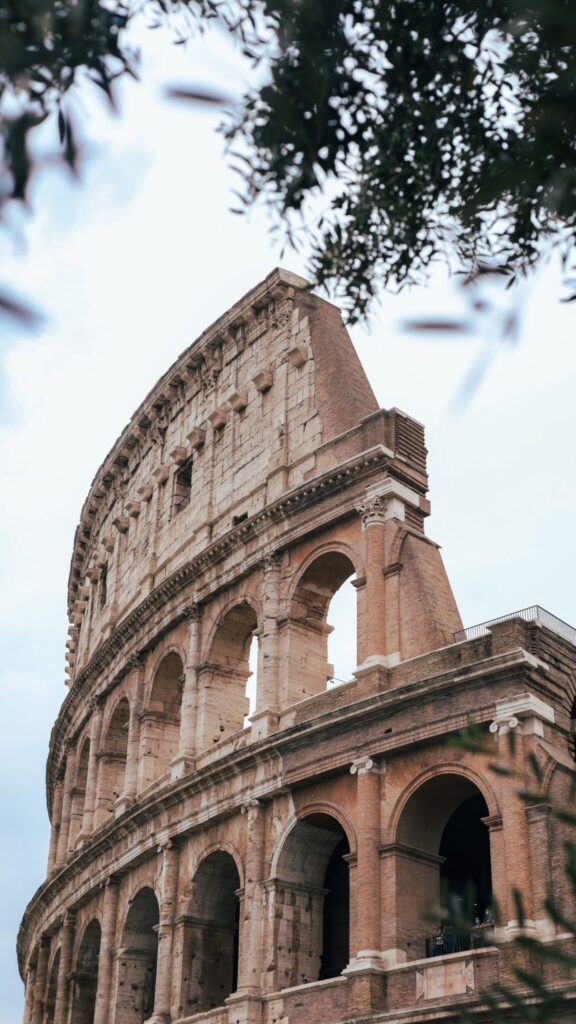

Shopping
When shopping for clothes or furniture, it is hard to think of a more iconic phrase than “Made in Italy.” The words embody attention to detail, a passion for quality, and a focus on aesthetics. Design in Italy implies high standards of fashion in jewelry, shoes, dresses, shirts, pants, and bags, encompassing items for women and men. Different regions can contribute to the fashion sector by producing specialty products, such as Le Marche’s connection to fantastic footwear and Tuscany’s constant buzz for bags, shoes, and clothing.
The main cities across the peninsula show their style with quality stores inside designated fashion districts. The most popular destination for the fashionable is The Mall Outlet located outside Florence. The complex hosts more than 100 stores, including Prada, Dolce and Gabbana, Lacoste, and Bormioli.
Find Activities Right for Your Italy Workation
The best experiences in Italy can be perfect for your Workation, giving you memorable activities to enjoy according to how you want to explore the country. Visit the quiet islands to find great beaches, meet local chefs to learn how to make regional dishes, or talk to your Workation Hero to plan the best activities around your preferred expectations. Find new food, discover clear water, or witness world-famous art transcending history in Italy.
Find out more information on how you can enjoy your Workation package by letting us help maximize your time and productivity to surpass your expectations. Take one step closer to planning your Workation or learn more about What you need to know before traveling to Italy for a Workation.



